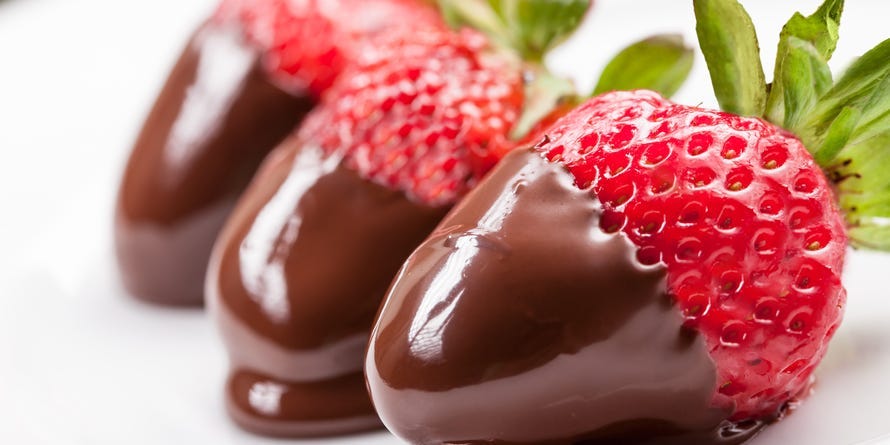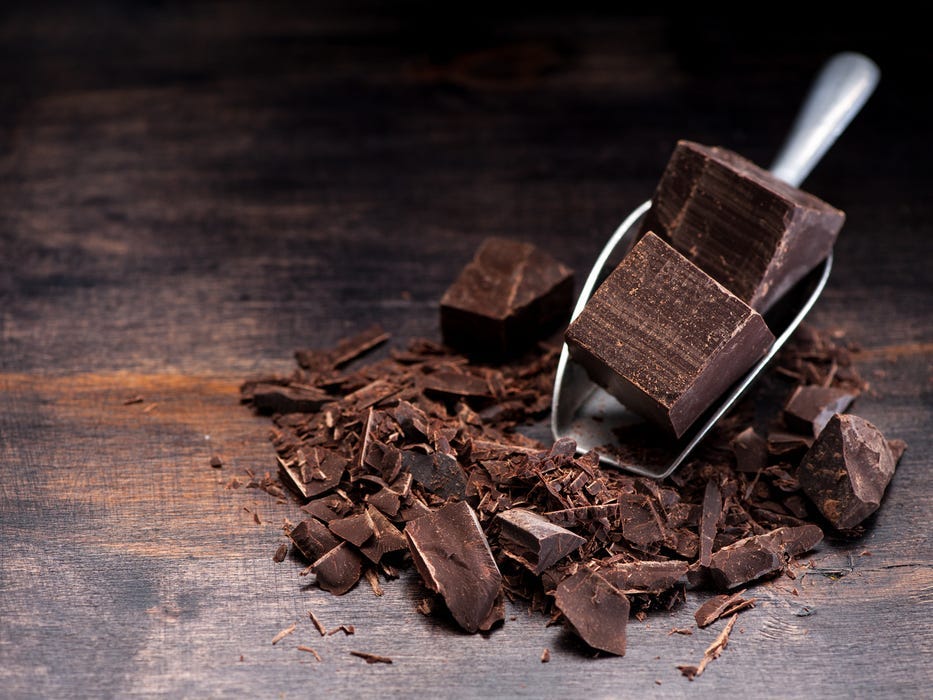
Francesco83/Shutterstock
- To temper chocolate, you need a double boiler, a cooking thermometer, and a rubber spatula.
- The process of tempering involves heating and cooling chocolate to specific temperatures.
- Tempering chocolate creates a glossy, professinal finish and snap at room temperature.
- Visit Insider's Home & Kitchen Reference library for more stories.
Looking for smooth, glossy chocolate with a good snap? That's all thanks to tempering. And if you're trying your hand at making gorgeous chocolates or even chocolate-dipped pretzels or fruit at home, you may need to temper your chocolate first.
"Properly tempered chocolate affects not only the aesthetics of a chocolate bar or bonbon, but it aids in handling and even sensory attributes," says Institute of Culinary Education pastry and chocolate lab instructor Michael Laiskonis. "The tempering process gives us a chocolate bar that is temperature stable, offers an attractive, shiny appearance and a brittle, snappy texture, as well as a slow, pleasant melt in the mouth and gradual release of flavor."
Tempering chocolate can certainly sound intimidating, but it is a crucial step for many sweet treats. With the proper tools and guidance, it is possible to do at home.
What chocolate to use

Marina Shanti/Shutterstock
According to Laiskonis, all general chocolate types from dark to milk and white chocolate can be tempered. Different types of chocolate contain various proportions of cocoa butter. A high proportion of cocoa butter, with a fat content above 35 percent, can aid the chocolate tempering process.
The goal with tempering is to achieve the ideal solid crystal structure in the cocoa butter. While there's a range of six crystal structures cocoa butter can achieve, the first four are not stable enough. Once the fifth stage, Type V crystals, are achieved, the chocolate is considered properly tempered. The sixth structure only occurs over time based on storage temperature.
Temperatures for tempering chocolate
The process of tempering chocolate involves melting, cooling, and reheating of chocolate within specific temperature ranges depending on the type of chocolate. Laiskonis suggests following any guidance on the chocolate's packaging for temperature ranges, as they may be specific to the type and brand of chocolate you're tempering.
|
Chocolate Type |
Temperature 1 |
Temperature 2 |
Temperature 3 |
| Dark Chocolate | Heated to 113°F(45°C) to 122°F (50°C) | Cooled to 84°F (29°C) to 86°F (30°C) | Heated to working temperature of 88°F (31°C) to 90°F (32°C) |
|
Milk Chocolate |
Heated to 104°F (40°C) to 113°F (45°C) | Cooled to 82°F (28°C) to 84°F (29°C) | Heated to working temperature of 86°F (30°C) to 88°F (31°C) |
| White Chocolate | Heated to 104°F (40°C) to 113°F (45°C) | Cooled to 82°F (28°C) to 84°F (29°C) | Heated to working temperature of 86°F (30°C) to 88°F (31°C) |
Troubleshooting chocolate tempering
-
The chocolate won't set. Tempered chocolate may not set if it didn't have enough seed chocolate introduced. Introducing the seed chocolate during the cooling stage aids in the formation of Type V crystals. If not enough crystals form, the chocolate won't set and a grey-white finish may develop.
-
The chocolate looks hazy. Sugar bloom can cause a whitening effect on chocolate. This happens with the introduction of moisture or excessive humidity. Be sure your work surface and tools that come in contact with the chocolate remain clean and dry. Rapid changes in temperature can also introduce unwanted moisture.
-
The chocolate seized. This can occur if any water is introduced while tempering. Be sure liquid or condensation doesn't come in contact with your chocolate. If you're having this issue using the double boiler, you can melt your chocolate in the microwave in short intervals instead.
-
The set chocolate has scratches or fingerprints. The surface of chocolate can easily be affected by fingerprints or pieces that have bumped into each other, ultimately resulting in exterior flaws. These flaws take away from the smooth, glossiness of the tempered chocolate. Wear gloves while working with tempered chocolate and be careful not to allow chocolates to touch before fully setting.
Insider's takeaway
Tempered chocolate is utilized for everything from truffles and bonbons to chocolate-covered strawberries. It's the best way to ensure your chocolate is temperature stable, along with enhancing the look and texture of chocolate. Tempering chocolate takes patience, and it's important to be precise when it comes to temperature, but it is certainly doable at home with just a few key tools.